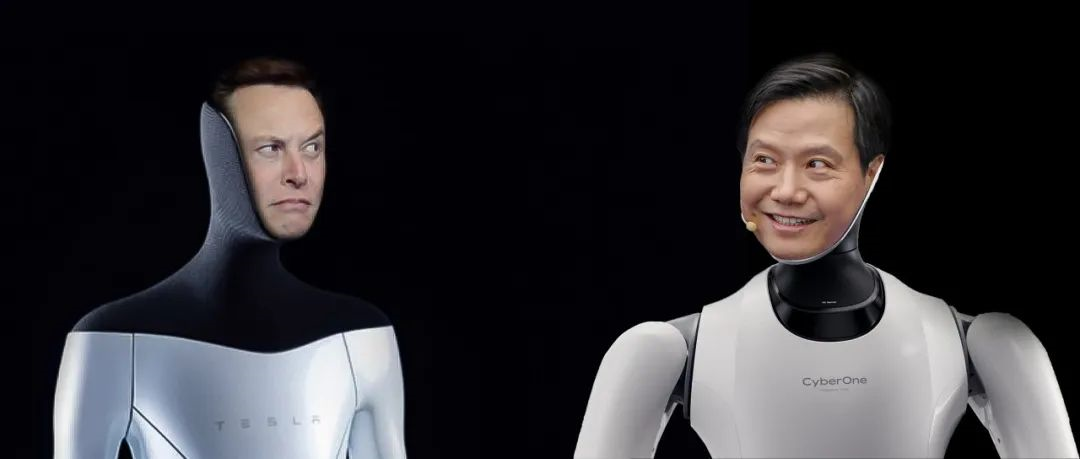I first saw Lei Jun’s speech on social media and immediately rejected it when I learned it was expected to last three hours.
Since 2020’s “Believe in yourself, forge ahead,” through 2021’s “My dreams, my choices,” and into this year’s “Lessons learned from overcoming life’s trials,” Lei Jun, who has entered his destiny year, and his company Xiaomi, which has been in operation for 12 years, seem to have never-ending stories to tell.
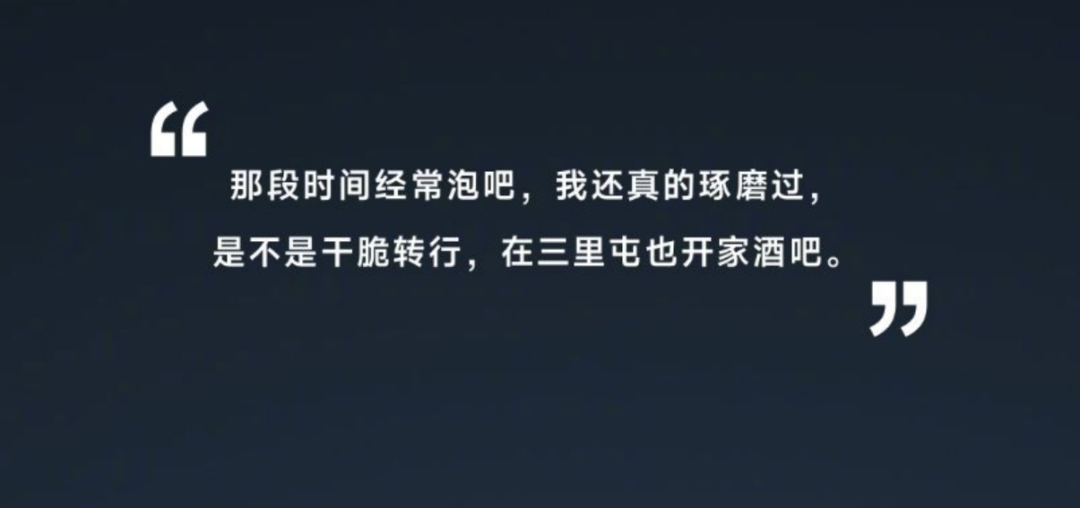
In recent years, I have listened to many stories as listening to podcasts has become my greatest hobby. At this moment, I just want to see the fall season’s new products arrive as scheduled and decide whether to spend money.
As long as you snatch up some bottom-priced items during JD.com’s 618 shopping festival, you’ll understand that you can save a lot of money if you don’t buy the first release.

Fortunately, before the speech began, Lei Jun did not forget to promote this “One more thing” on Weibo, so that no automotive media colleagues would be left in the dark.
In addition to the automatic driving road test video clip, Lei Jun narrated the progress of Xiaomi’s car-making:
-
Since its announcement to make cars on March 30, 2021, Xiaomi has entered the automotive industry for 500 days.
-
“I chose autonomous driving without hesitation as the first breakthrough direction for Xiaomi electric cars.”
-
Xiaomi has been determined to self-develop its own full-stack strategy from the beginning – with a side order of influencing peers, “in fact, there are not many automakers today who have such determination to self-develop.”
-
In the first stage of planning, Xiaomi will invest 3.3 billion yuan in research and development costs, and has formed a dedicated team of more than 500 people, along with cooperation from the Xiaomi AI Laboratory, Xiao Ai classmate team, phone camera department, and other teams and departments.
-
As for the Xiaomi autonomous driving test car seen throughout the country, this is part of the planned 140 test cars in the first phase.
-
Xiaomi’s first goal for autonomous driving is to work hard for two years and enter the first group in the industry in 2024.
If Lei’s speech patterns weren’t so quirky, some might think that phrase “making cars must be done with reverence” was a joke. We also have our own opinions on the first public progress announcement of Xiaomi’s car-making project.
“Enter the First Group in the Industry in 2024,” Is There Also a Speed-up Class for Autonomous Driving?
Perhaps it’s because they have endured the difficulties of landing L3, but there are many “strong words” about autonomous driving lately.On Monday, Robin Li said that in the field of autonomous driving, “The degree of integration is leading Tesla by a generation”; on Thursday, Lei Jun said that Xiaomi’s goal for autonomous driving is to “enter the industry’s first camp in 2024”.
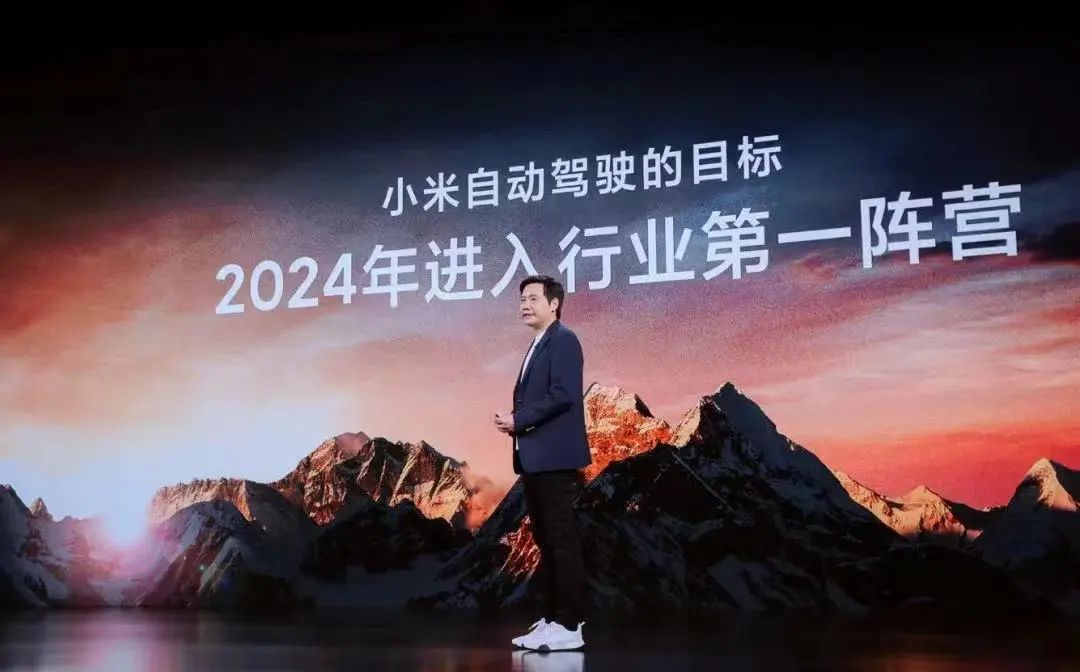
A year ago, when Lei Jun announced that Xiaomi was building cars, netizens exclaimed, “The user-centered enterprise pioneer has come to teach.” Unexpectedly, Xiaomi’s soft power has not been able to show itself and has plunged headfirst into the hardest bone of autonomous driving.
If the confidence that Robin Li gave off when he talked comes somewhat from Baidu Apollo’s accumulation over the past seven years, then who gave Lei Jun the confidence?
In his annual speech, Lei Jun played an eight-minute-long autonomous driving test video. Highways, urban roads, parking, on and off-ramps, following cars, turning around, obstacle avoidance, and autonomous parking were all included, basically covering the standard scenarios for current autonomous driving testing. The concise and clear storyline and clear and stable point cloud images were used to help netizens understand the functionality, even using a God’s-eye view to intuitively demonstrate the operating effect… At least in terms of dissemination effects, Lei Jun won.
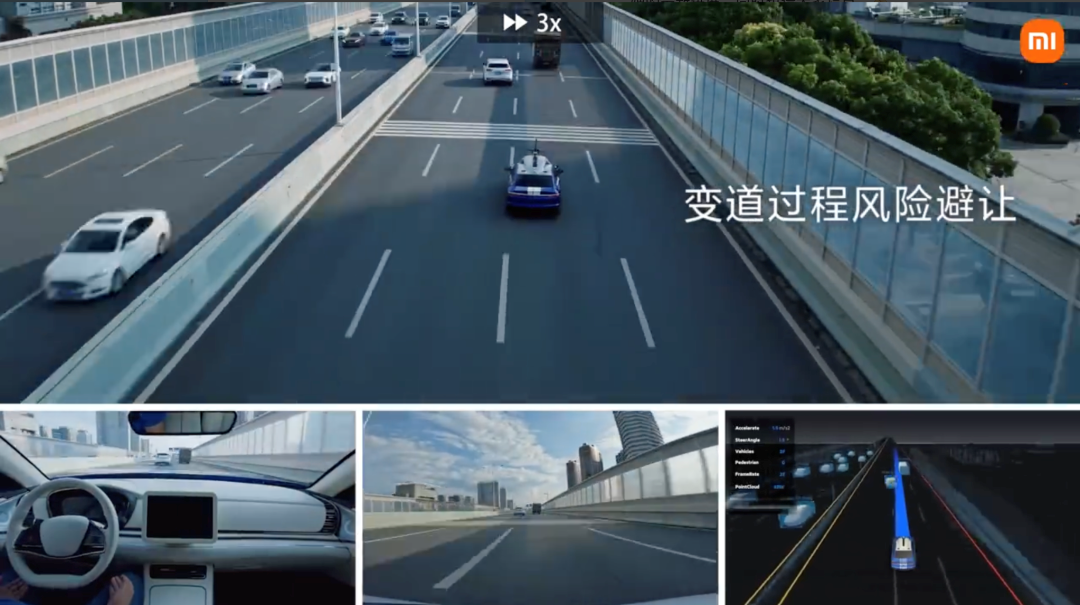
However, from this carefully edited video, it is difficult to see the true strength of Xiaomi’s autonomous driving. The overall strategy is relatively “cautious,” with a far distance when following cars, making it easy to be cut off multiple times on the road; braking when giving way to pedestrians and traffic lights is also relatively sharp due to safety considerations.
“It’s at the entry-level in the industry, and the algorithms are a bit rough.” – As the saying goes, outsiders watch the excitement, insiders watch the door. After interviewing several autonomous driving industry practitioners for their thoughts on this demo video, we received such evaluations.
This “roughness” is reflected in details such as far following distance, being easily cut off, no protection when turning around, not giving way to pedestrians, and sharp braking at traffic lights. These seemingly insignificant flaws in testing are the hurdles that are difficult to overcome in actual vehicle testing or even mass production.
At the press conference, Lei Jun told a story about a “salesman who learned the trade in seven days.”

As a technologist, Lei Jun experienced selling products in a shop for seven days, understood user needs, not only quickly became the sales champion, but also helped him to create products closer to users. “Being close to users and understanding user needs” is not only Lei Jun’s secret to past product successes, but also the key to whether Xiaomi’s car-building can take a shortcut and surpass others on the bend.Unfortunately, there are no shortcuts in autonomous driving. Achieving autonomous driving functionality on test vehicles has only completed 60% to 70% of early work. To make it available in vehicles for testing, production, and customer acceptance requires testing with scenarios, the accumulation of 0.1% and 0.01% increments, and repeated polishing by investing real money. Just as Guo Degang described the art of xiangsheng, “the threshold is inside the door.” Once inside, an endless ladder must be climbed. Autonomous driving is the same.
From announcing car production in April 2021 to showcasing the autonomous driving demo, it took only 500 days. If we measure the level of autonomous driving from the perspective of 500 days, starting from scratch, Xiaomi’s speed can indeed be considered as “speeding up.” However, Xiaomi acquired DeepMotion, a deep-tech company, in July last year. In 2018, DeepMotion publicly declared that “the degree of automation of high-precision maps for more complex central urban roads has reached 90%.” Today, Xiaomi’s display is largely built on DeepMotion’s achievements over the past five years.
Even achieving the current level of effect cannot be done in just 500 days. There are no shortcuts in autonomous driving, and there is no way to become an expert overnight.
That being said, Xiaomi still has a lot to accomplish in order to achieve Lei Jun’s goal of being “number one in 2024.” They only have two years to go from polishing the current effect to making a demo on an actual vehicle to producing it on a large scale.
I’m not sure if Lei Jun’s “number one in 2024” goal will be achieved before Xpeng’s “flying car mass production” goal.
CyberOne debuts, from “LeBreus” to “LeResk”?
I thought that autonomous driving was the main show, but in the end, Lei Jun also showed the trump card – the full-size humanoid robot CyberOne.
When I first saw CyberOne, it felt familiar. It seemed like a scene from the AI Day held overseas a year ago. If you told me that CyberOne was inspired by Tesla’s Optimus and was completed within a year, I would believe it.
It’s more than just the scenario. Autonomous driving, full-size humanoid bionic robots, and robotic arms for automatic charging stations for automatic parking… If I just saw these few words, I would have thought it was Tesla’s AI Day that came early.On the 177cm-tall, 52kg full-size humanoid robot CyberOne, there is integrated spatial perception capability with automatic driving technology, Xiao Ai’s cognitive ability, and mechanical coordination at the hardware level.
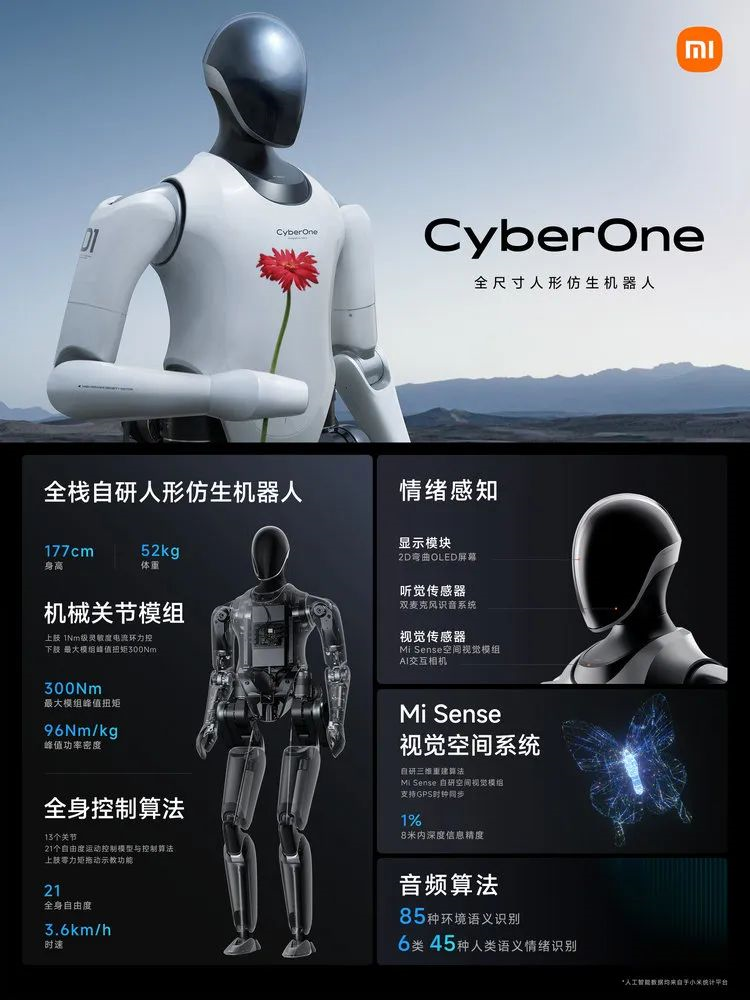
Speaking of which, I suddenly realized that I haven’t heard of the term “Lei Bus” for a while. From “Lei Bus” to “Lei Sk”, Xiaomi’s focus also shifted from smartphones to autonomous driving and intelligent robots.
“Wherever there is a user pain point, there is an opportunity for entrepreneurs,” said Lei Jun. Now you can see where the pain points are.
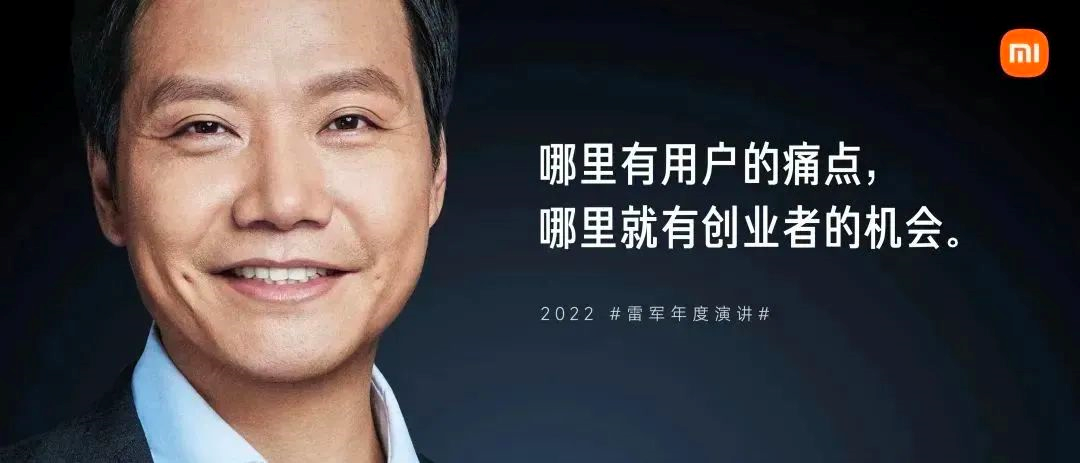
Of course, speaking of pain points, it is inevitable to mention a joint pain point of autonomous driving, humanoid robots, and mechanical arm charging stations: how to commercialize them?
Last year, when Tesla released its robot, there were doubts about how to commercialize it. Musk even intended to put the robot in his own factory to replace production line workers and create demand space. So what about Xiaomi’s humanoid robot? Where is the demand for its commercialization?
From robot dogs to robots, to autonomous driving; from “Lei Bus” to “Lei Sk”, if Xiaomi was ridiculed as “light R&D” a few years ago with insufficient investment in R&D, the recent investment in these innovative technologies seems to represent Xiaomi’s increased investment in R&D and technological innovation. Last year, Xiaomi invested RMB 13.2 billion in R&D, and it is expected to reach RMB 17 billion this year, an increase of nearly 30%. Congratulations, it has finally caught up with Huawei’s one-tenth investment in R&D.
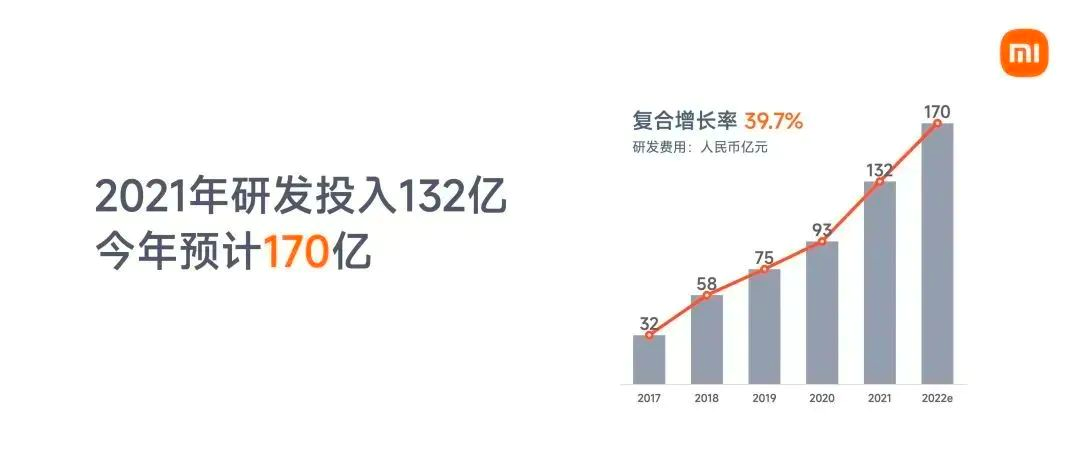
In the next five years, Xiaomi’s R&D investment will reach 100 billion. Of course, this is not just a budget for cars. For Xiaomi, which is ready to fully self-develop and build factories, this investment is not excessive.

What has Lei Jun been doing in the past 500 days?
In last night’s speech, Lei Jun talked about his first impression of the internet, “It was a crazy era. I couldn’t understand it, but I was deeply shocked.”
Perhaps Lei Jun regrets that he missed the beginning of the internet, but he will try to participate in things that he couldn’t understand beforehand. Even if he thinks “Li Bin is a fraud,” he still stands by NIO.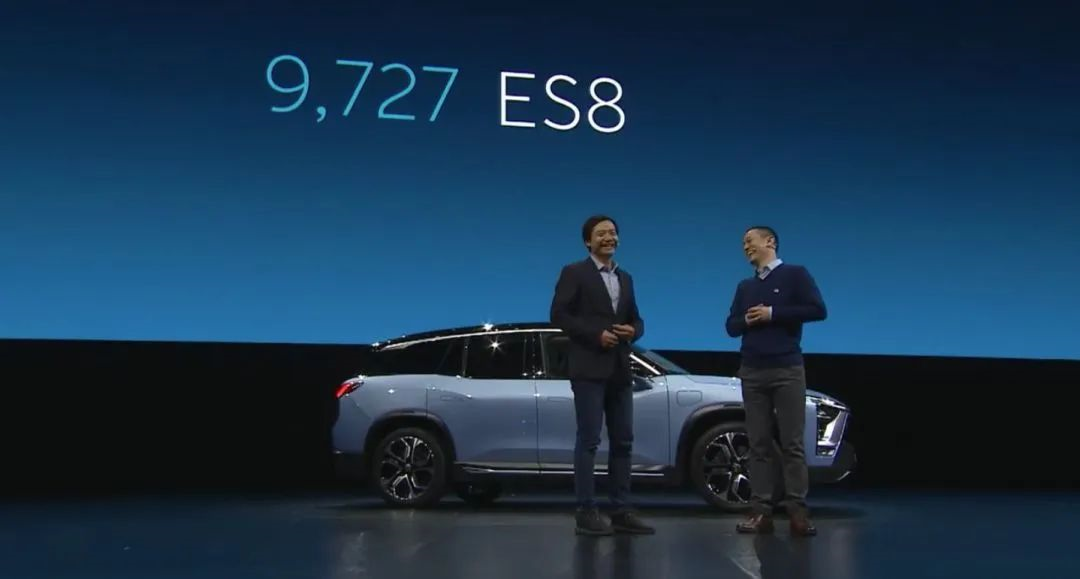
Xiaomi’s Journey in the Auto Industry
Xiaomi announced its foray into the auto industry in March 2021 with “Seven-day speed to sales champion” and “Hundred-day learning to make cars.” In the first 100 days, Mr. Lei Jun went on a deep tour of China’s auto industry chain, visiting Longan, SAIC, Dongfeng, Guangzhou Automobile, SAIC-GM Wuling, and Great Wall, among others, as well as suppliers such as Bosch and Ningde Times.
This action allowed the circle of speculations on Xiaomi’s car-making to gradually merge and a relatively clear path to emerge. Xiaomi’s car production mode will be more inclined to NIO’s model, and many believe that Xiaomi will “outsource” or “acquire existing factories” to land the vehicles. For IT or internet companies that are entering the auto-making market, their core advantage lies in the intelligent ecosystem, so choosing a more “light” way to solve the car-making problem is undoubtedly the most favorable.
In addition, there are speculations that Xiaomi, which excels in supply chains, will adopt a similar approach to WM Motor, where the executive team is comprised of many supply chain experts, to assemble vehicles.
As the development moves forward, we found that Xiaomi Auto has completely deviated from our initial guesses.
On September 1, 2021, Xiaomi established Xiaomi Auto Company, followed by news of several senior auto industry practitioners joining. Interestingly, the core figures of Xiaomi Auto are even more eye-catching than Xiaomi itself. Former president of Jinkou Automobile, Yu Liguo, who once had discussions with car owners, and the former dean of Geely Research Institute, Hu Zhengnan, who once confronted Ideal PR are among them. Their hiring pace at the start-up vehicle company indicates they are serious.
According to industry insiders, a number of core members of “Lian Dianbang” at Geely left together with Hu. They led the development of Geely’s SEA architecture and have strong combat effectiveness in architecture. Losing these trusted aides caused Geely to eventually “make mobile phones.” They exchanged core teams with Xiaomi to further accelerate the pace of reaching their goals.
In his annual speech in 2020, Mr. Lei Jun mentioned that in Xiaomi’s first year, 80% of his time was spent on recruiting. Today, Xiaomi has a higher attraction to talent compared to over a decade ago and no longer needs to “visit 30 thatched huts 30 times.” However, it still took Mr. Lei six months from project approval in March to the confirmation of the core team in September to attract talent.

From these actions, it is not difficult to see that Xiaomi is not ready to completely give up its soul in the car manufacturing industry. In the era of convergence of electronic and electrical architectures, having core architecture R&D capabilities can further strengthen its intelligent advantage.On November 27, 2021, Xiaomi Auto signed a cooperation agreement with Beijing’s Yizhuang Development Zone. The Xiaomi Smart Auto project will cover the Xiaomi Auto headquarters and sales headquarters, as well as the R&D headquarters. It will be built in two phases and will have an annual production capacity of 300,000 vehicles. This partnership dispels our assumption that Xiaomi would resort to contract manufacturing.
Building its own factory has its advantages and disadvantages. One advantage is better cost control, but having too many assets tied up in manufacturing can also create more pressure. If Xiaomi Auto cannot achieve independent listing in the short term, it will be a big challenge for Xiaomi’s cash flow. Of course, when it comes to spending money, Lei Jun is still relatively cautious. After all, the last person who carried heavy debt to produce cars was Jia Yueting, and we all know how that ended. Therefore, constructing the manufacturing system in two phases will help to spread out the pressure as much as possible.
Compared with the fact that autonomous driving technology will enter the top tier in the industry by 2024, Xiaomi’s layout in car manufacturing is more pragmatic.
Final Thoughts
Today, many people say that Lei Jun telling his story is just to motivate us with chicken soup for the soul.
But we think that if it can bring strength to exhausted souls, even if it’s just a bowl of chicken soup, what’s wrong with that?
Even without Li Wanqiang, who was known as the marketing genius, Xiaomi’s story could still go on, and so could Lei Jun’s own. When we saw the price of the new product gift box was RMB 13,999, we knew that it would be a great story to tell about how Xiaomi started at RMB 1,999.
Xiaomi’s road to “attacking the high-end” in its smartphones has not been smooth. With users’ replacement cycles getting longer and the global smartphone market shrinking, whether the “sell phones to subsidize cars” strategy can succeed is still a question mark.
Automated driving does not believe in chicken soup, just as Moscow does not believe in tears. If we must tell a success story from scratch that can be achieved through hard work, we don’t know what Baidu Apollo and Xiaoma Zhixing, who are working hard on the roads all over the country, think.
Many people like Xiaomi, and many people don’t. We don’t have to be overly negative about what Xiaomi is doing.
After all, for a brand new business, 500 days is just the beginning. Just as Lei Jun said in the preface of “Xiaomi Entrepreneurial Thinking,” just like the lyrics from Bob Dylan’s songs he heard when he was young, “The answer is blowing in the wind.”
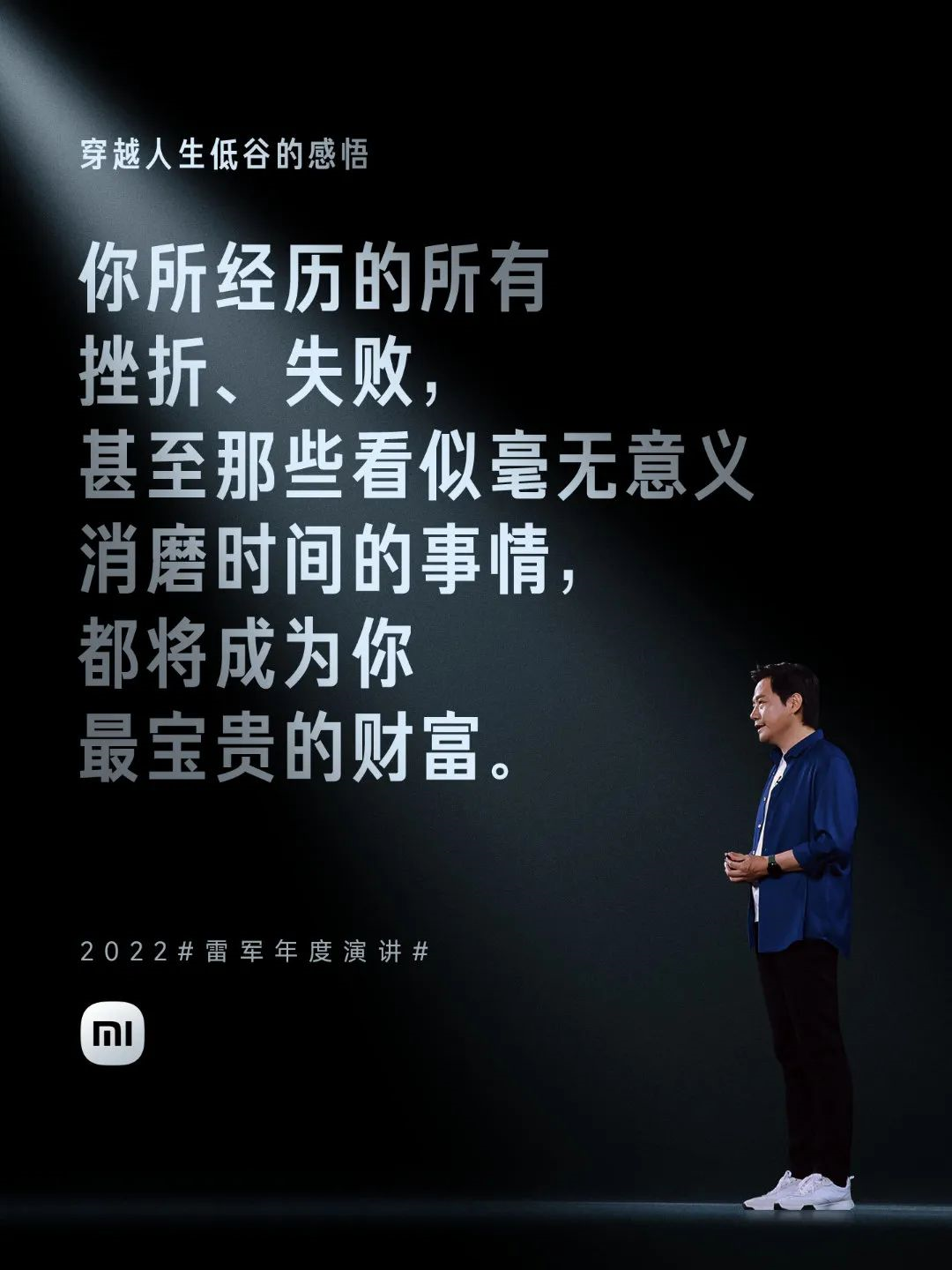
This article is a translation by ChatGPT of a Chinese report from 42HOW. If you have any questions about it, please email bd@42how.com.
